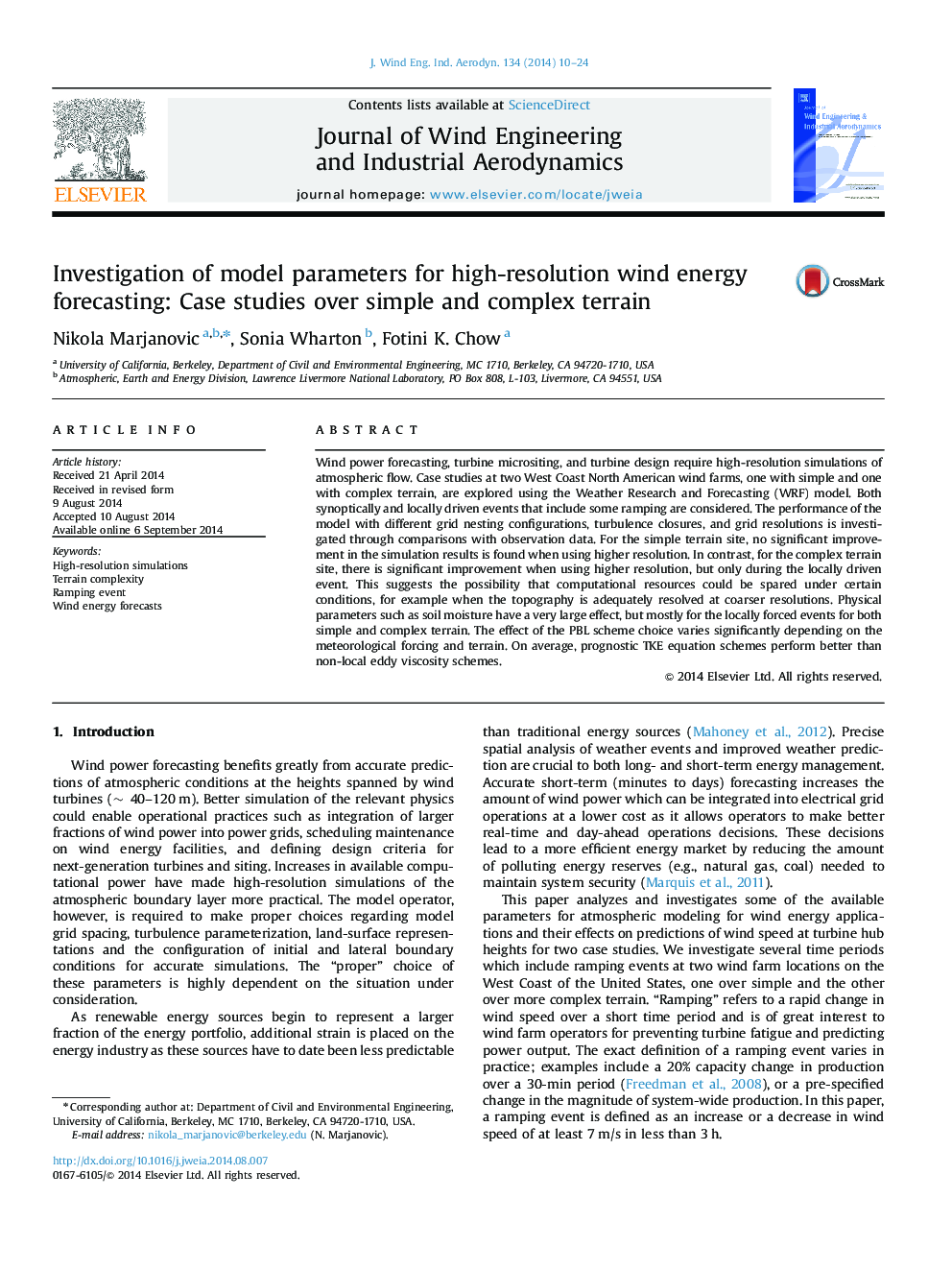| Article ID | Journal | Published Year | Pages | File Type |
|---|---|---|---|---|
| 292832 | Journal of Wind Engineering and Industrial Aerodynamics | 2014 | 15 Pages |
Wind power forecasting, turbine micrositing, and turbine design require high-resolution simulations of atmospheric flow. Case studies at two West Coast North American wind farms, one with simple and one with complex terrain, are explored using the Weather Research and Forecasting (WRF) model. Both synoptically and locally driven events that include some ramping are considered. The performance of the model with different grid nesting configurations, turbulence closures, and grid resolutions is investigated through comparisons with observation data. For the simple terrain site, no significant improvement in the simulation results is found when using higher resolution. In contrast, for the complex terrain site, there is significant improvement when using higher resolution, but only during the locally driven event. This suggests the possibility that computational resources could be spared under certain conditions, for example when the topography is adequately resolved at coarser resolutions. Physical parameters such as soil moisture have a very large effect, but mostly for the locally forced events for both simple and complex terrain. The effect of the PBL scheme choice varies significantly depending on the meteorological forcing and terrain. On average, prognostic TKE equation schemes perform better than non-local eddy viscosity schemes.
